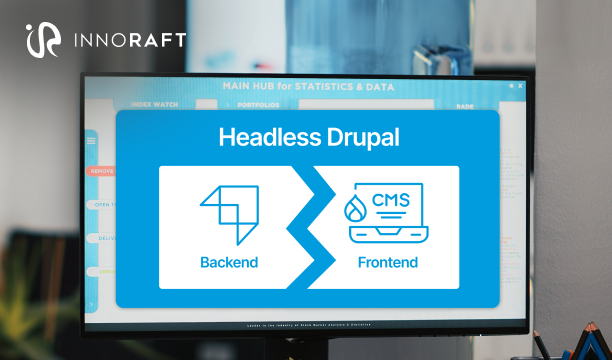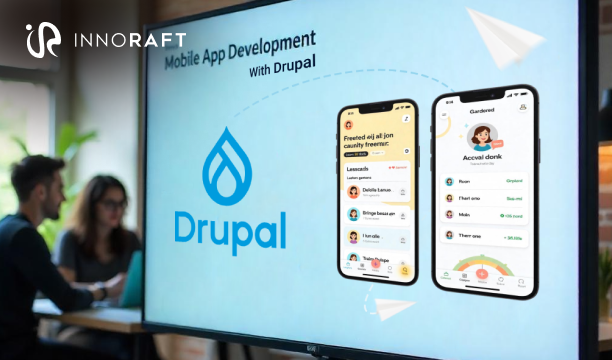Drupal is a robust open-source CMS known for its backend flexibility and structured content modeling. While its theming layer is powerful, organizations often adopt a decoupled or headless CMS with Angular approach. This leverages Drupal’s backend capabilities while integrating modern JavaScript frameworks like Angular to deliver highly interactive frontends.
Angular is a TypeScript-based framework well-suited for building SPAs. When paired with Drupal in a headless setup, Angular consumes Drupal’s content via APIs (REST, JSON:API, or GraphQL), enabling dynamic and performant UIs.
Combining Headless Drupal with Angular is a superb way to build modern web applications, along with an opportunity to create better digital experiences. By taking advantage of decoupled Drupal architecture, it can streamline frontend development while allowing greater flexibility in the development process.
Power of Headless Drupal with Angular for Scalable Frontends
Headless Drupal using Angular is experiencing growth as organisations look to develop modern, seamless digital experiences. Drupal is very good at managing structured content and user data, but is often limited in multichannel distribution, custom API connections, and interactive front-end experiences. To mitigate those limitations, some teams are opting for decoupled Drupal services, which serve up a JavaScript Framework for the front end (such as Angular).
In a headless architecture, Drupal manages content and exposes it through APIs. Angular consumes this data and renders it on the client, enabling responsive and interactive UIs across web and mobile channels.
Enter Angular: An Emerging Front-end Solution
The Angular framework provides an excellent way to build interactive, maintainable user interfaces. The component-based architecture, built-in routing, and CLI tooling make it well-suited for decoupled frontends. Two-way data binding is supported, but most modern Angular apps use unidirectional data flow for maintainability.
Drupal's support for RESTful APIs and JSON:API makes it a powerful headless CMS with Angular. This data can be easily consumed by Angular applications, which can then dynamically render content to the client. This decoupling allows frontend and backend teams to work independently, resulting in faster development.
For organizations seeking to improve the user experience while retaining their investment in Drupal's backend, integrating Angular with Drupal is an excellent option. Several companies are now hiring Angular developers to create modern, responsive frontends that use the features of both technologies in a Drupal decoupled architecture.
Why Using AngularJS and Drupal Will Make You Rethink Your Web Strategy
When combined, Headless Drupal with Angular provides a robust solution for developing scalable web applications. Here are some key reasons why this combination stands out and can considerably improve your web development services strategy.
- Angular is a feature-rich, enterprise-grade framework. It provides opinionated tooling, dependency injection, RxJS, and TypeScript support, making it suitable for large-scale apps.
- Due to HTML's coding structure, it is popular with web developers and designers. HTML is one of the simplest languages, meant to be clear and intuitive to understand and read. Angular extends HTML for designing user interfaces, allowing you to develop interactive, custom web application solutions that are highly functional and are nearly impossible to break.
- Angular code allows you to design reusable components.
- Angular does not inherently prevent cyber-attacks. Security comes from sanitization, strict content security policies, and API hardening in Drupal.
- Angular uses the MVC (Model-View-Controller) pattern, which drives quicker development, multiple views, asynchronous methods, Google-friendly, and other rich features.
- Angular makes unit tests easier to carry out since it is pre-configured, meaning it can be speedy and easy for developers to test their actual code.
- With features like two-way data binding, the framework is so dynamic that users' actions can instantly activate application objects and vice versa, showing how interactive the framework is.
How Headless Drupal with Angular Enhances Frontend Security?
A large community supports both Drupal and Angular. This implies that all security elements are constantly under scrutiny, and the possibility of something going wrong is low to none. Furthermore, the combination of Headless Drupal with Angular will give an additional coating of protection to your site. The browser communicates with Angular, which in turn consumes Drupal APIs. There is still server-side communication with Drupal, but it is API-driven rather than theme-driven. As a result of all of this, your site will become resistant to harmful code, which prominent hackers are known to inject into your databases. And everything would be well in the cyber world.
Drupal provides an excellent number of APIs and modules for setting up and modularizing a CMS; however, it can be difficult to construct a highly interactive frontend on Drupal. Using AngularJS as the frontend framework provides a modern, long-term supported solution for decoupled Drupal projects. The end product is a future-proof and engaging Drupal website that looks and feels excellent.
Understanding how to manage APIs, security, content modelling, and deployment processes, in addition to Angular, is crucial to integrating Angular with Drupal. This is why it is vital to employ dedicated Angular developers who know both front-end frameworks and Drupal.
Conclusion
Drupal's backend capability remains unmatched when developing complex workflows, user roles, and content organization. The flexibility, fast, lightweight, responsive, and usable capability of Angular front-end and the power of backend Drupal is a robust tech stack that can build scalable, responsive, usable web applications, when combined with expert Drupal development services.
Innoraft is a Drupal development company that can provide you with the technological competence you're seeking. The possibilities of combining these two powerhouses are endless, whether it's dynamic websites or interactive interfaces. So, when do you plan to take them up?
FAQ
Frequently Asked Questions
Didn’t find what you were looking for here?




